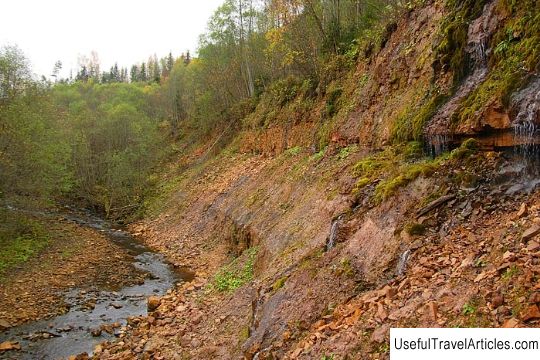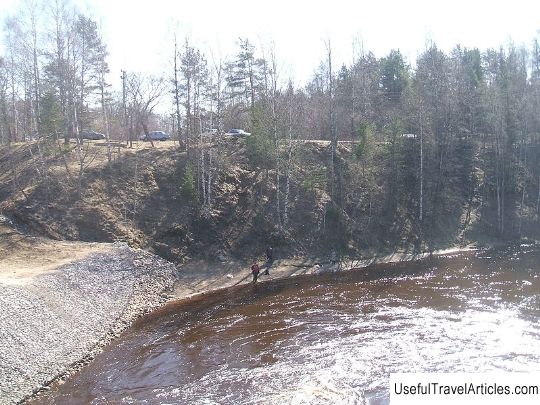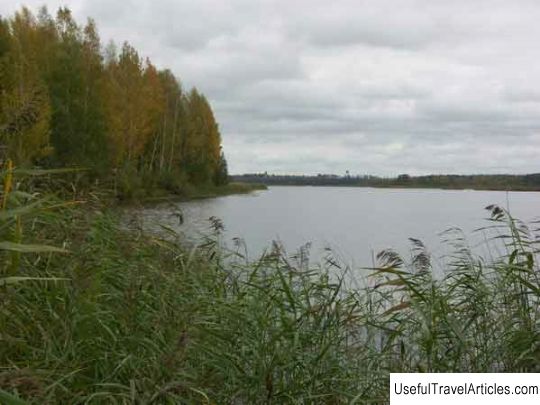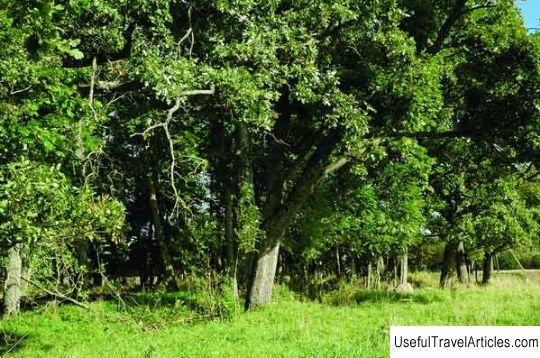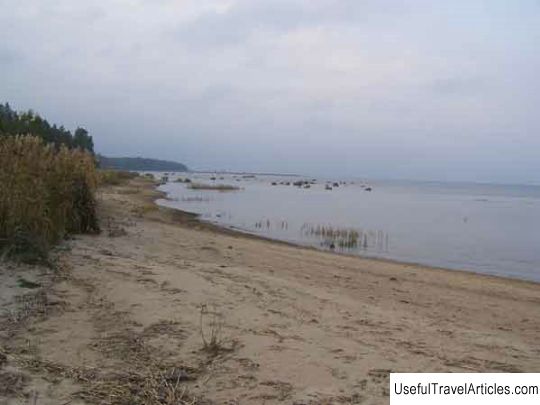Natural park ”Vepsky forest” description and photo - Russia - Leningrad region: Boksitogorsky district
Rating: 7,5/10 (100 votes) 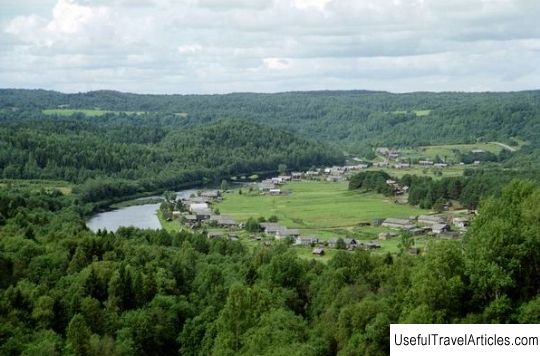
Natural park "Vepsky forest" description and photos - Russia - Leningrad region: Boksitogorsky district. Detailed information about the attraction. Description, photos and a map showing the nearest significant objects. Photo and descriptionThe Vepsian Forest Natural Park was founded in 1970. It is located in the Podporozhsky, Tikhvin, Lodeynopolsky and Boksitogorsky districts of the Leningrad region, in the southeast of the village of Kurba, the villages of Ladva and Myagozero (Minitskaya). The area of the reserve is 7.392 thousand hectares. The natural park was created to preserve forest ecosystems, oligotrophic swamps and lakes, dystrophic lakes, preserve especially valuable natural objects and complexes, and restore disturbed ecological systems. It is planned to create a network of “ecological paths” of varying degrees of complexity in the nature park. There is a guest house in the village of Ozorovichi. The territory of the reserve is a classic area of glacial deposits, the site of the last Valdai glaciation. At an altitude of 200-290 m, there is a strip of marginal glacial formations with a characteristic hilly relief. In the east of the park, a large area is occupied by an undulating plain. The park is rich in unique landscapes. On its territory you can see picturesque lake pits resembling mountain lakes; river valleys with groundwater outlets; hills covered with pine and spruce forests; open raised bogs, tracts of interfluvial valleys. On one of the parts of the park, manifestations of the activity of a glacier are visible, which moved huge blocks of coal deposits 14 km from their original location. The territory is cut by a dense network of rivers: Nizhnyaya Kurba, Ashchina, Sondala, Tyanuksa, Verkhnyaya Kurba, Urya , Genoa, Kapsha, Koloshma, Kanzhaya. The territory is rich in lakes that differ in shape and size: Pechevskoe, Ozerskoe, Yandozero, Ashozero, Ladvinskoe, Kurbozero, Kapshozero, Sarozero, Ullozero, Dolgozero, Kharaginskoe, Alekseevskoe, Lerinskoe, Bolotnoe, Gagar'e and others. Most of the lakes are interconnected by short streams and channels. The area of forests is 59% of the entire territory of the reserve, 37.5% - bogs 2.8% - streams and lakes. The natural park is dominated by spruce forests. Most of them are blueberry spruce forests, characteristic of the middle taiga, on two-member sediments and drained loams. Less common are sphagnum-bilberry spruce forests on weakly drained peat and peaty-humid soils. Almost all spruce stands are over 150 years old. A significant part of the area is occupied by indigenous spruce forests, which are 200-270 years old, which are in various phases of cyclical natural dynamics. Pine forests occupy a quarter of the forest area, swampy prevails. In the southern and western parts of the reserve, there are young birch stands, which were formed on the sites of clear cuttings in 1970-1980. The combination of forests, different in composition, origin and age, serves as a prerequisite for research aimed at studying the biogeocenotic cover and a comparative study of its dynamics. Scientific research work has been carried out here since 1971-1972. The park is a base not only for scientific work, but also for environmental education and upbringing of the population. The work carried out in the park contributes to the study, as well as the restoration of the historical and cultural values of this region. Specially protected objects include very rare in the Russian North-West, high-aged indigenous spruce and other species, not affected by human activity, raised bogs, dystrophic and oligotrophic lakes, rare plants: marsh bane, thorny bent, turf down, leafless caper, Lindberg sphagnum, Pallas honeysuckle and others. 57 species of birds were found here, many of them are protected. These are the field harrier, gogol, peregrine falcon, kestrel, kusha, wood grouse, gray heron, nuthatch, black kite, three-toed woodpecker. It is prohibited to carry out exploration work and develop minerals on the territory of the reserve; conduct activities that entail disturbance of the soil cover; perform actions that can change the hydrological regime of water bodies and territories. Here, main and intermediate felling, commercial hunting, resin harvesting, commercial fishing are prohibited, industrial harvesting of fruits, wild plants, berries, seeds, mushrooms, bark, peat and other types of animal and plant raw materials, activities that lead to a violation of the habitat of flora and fauna, the introduction of living organisms, as well as the placement and construction of industrial, agricultural enterprises, buildings, roads and other communications, except for those necessary for the activities of the reserve; the use of pesticides and mineral fertilizers, traffic; rafting of woods, mass recreation.      We also recommend reading 33-meter waterfall (33-m waterfall) description and photo - Russia - South: Tuapse Topic: Natural park ”Vepsky forest” description and photo - Russia - Leningrad region: Boksitogorsky district. |
